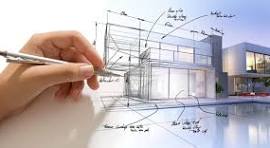Exploring the Essence of Architectural Design: A Journey into Creativity and Functionality
The Art of Architectural Design: Building Beauty and Function
Architectural design is a fascinating blend of artistry, engineering, and functionality. It is the process of creating spaces that not only serve a purpose but also inspire awe and admiration. From towering skyscrapers to humble homes, every building tells a story through its design.
The Principles of Architectural Design
Architects carefully consider various factors when designing a building, including:
- Functionality: A well-designed building should meet the needs of its occupants efficiently.
- Aesthetics: The visual appeal of a structure plays a crucial role in defining its identity and impact.
- Sustainability: Increasingly, architects are incorporating eco-friendly practices into their designs to reduce environmental impact.
- Cultural Context: Buildings often reflect the cultural heritage and values of the society in which they are built.
The Evolution of Architectural Styles
Throughout history, architectural styles have evolved in response to changing technologies, materials, and societal needs. From the grandeur of ancient Greek temples to the sleek lines of modernist skyscrapers, each era has brought its own unique contributions to architectural design.
Key Movements in Architectural Design
Some notable architectural movements include:
- Renaissance Architecture: Characterised by symmetry, proportion, and classical influences.
- Art Nouveau: Known for its organic forms and decorative motifs inspired by nature.
- Bauhaus: Emphasising simplicity, functionality, and the use of industrial materials.
- Postmodernism: Challenging traditional design conventions with playful elements and eclectic styles.
The Impact of Architectural Design on Society
Buildings shape our environment and influence how we interact with the world around us. Well-designed spaces can enhance our quality of life, foster community connections, and even promote cultural exchange. Architects play a vital role in creating buildings that not only stand the test of time but also enrich our lives in meaningful ways.
In conclusion, architectural design is a dynamic field that continues to push boundaries and redefine what is possible. By combining creativity with technical expertise, architects have the power to transform our built environment and leave a lasting legacy for future generations to admire.
The Benefits of Architectural Design: Enhancing Aesthetics, Functionality, Innovation, Well-being, Community Identity, and Sustainability
- Architectural design enhances the aesthetic appeal of buildings, creating visually striking and memorable structures.
- Well-designed architecture can improve the functionality of spaces, making them more efficient and user-friendly.
- Architectural design allows for creative expression and innovation, pushing boundaries to create unique and inspiring environments.
- Good architectural design can positively impact the well-being of occupants by providing comfortable, safe, and stimulating spaces.
- Architectural design plays a key role in shaping communities and cities, contributing to their identity and sense of place.
- Sustainable architectural design practices help reduce environmental impact by incorporating energy-efficient solutions and eco-friendly materials.
Challenges in Architectural Design: Cost, Time, Regulations, and Subjectivity
Architectural design enhances the aesthetic appeal of buildings, creating visually striking and memorable structures.
Architectural design plays a crucial role in enhancing the aesthetic appeal of buildings, transforming them into visually striking and memorable structures. By carefully considering elements such as form, materials, and detailing, architects have the ability to create buildings that not only serve their functional purpose but also captivate the eye and inspire admiration. Through innovative design choices and artistic vision, architectural design elevates the beauty of our built environment, leaving a lasting impression on those who experience these remarkable structures.
Well-designed architecture can improve the functionality of spaces, making them more efficient and user-friendly.
Well-designed architecture has the remarkable ability to enhance the functionality of spaces, ultimately improving their efficiency and user-friendliness. By carefully considering factors such as layout, flow, and accessibility, architects can create environments that not only look aesthetically pleasing but also serve their intended purposes effectively. Whether it’s a bustling office building or a serene residential home, thoughtful architectural design can greatly impact how people interact with and navigate through spaces, ultimately enhancing their overall experience and usability.
Architectural design allows for creative expression and innovation, pushing boundaries to create unique and inspiring environments.
Architectural design serves as a platform for boundless creative expression and innovation, enabling architects to push the limits of conventional thinking and craft truly distinctive and inspiring environments. By daring to explore new ideas, materials, and forms, architects can transform spaces into works of art that captivate the imagination and leave a lasting impact on those who experience them. This freedom to innovate not only fuels artistic exploration but also fosters a culture of continuous improvement and evolution within the field of architecture, resulting in the creation of truly extraordinary and unforgettable built environments.
Good architectural design can positively impact the well-being of occupants by providing comfortable, safe, and stimulating spaces.
Good architectural design can positively impact the well-being of occupants by providing comfortable, safe, and stimulating spaces. When a building is thoughtfully designed with the needs of its users in mind, it can create an environment that promotes mental and physical health. Comfortable spaces encourage relaxation and productivity, while safety features instil a sense of security. Additionally, stimulating design elements such as natural light, greenery, and open layouts can enhance mood and creativity. Ultimately, architecture has the power to improve the quality of life for those who inhabit the spaces it shapes.
Architectural design plays a key role in shaping communities and cities, contributing to their identity and sense of place.
Architectural design plays a pivotal role in shaping communities and cities, contributing significantly to their identity and sense of place. The buildings and structures within a cityscape not only provide functional spaces for living, working, and socialising but also serve as visual landmarks that define the character of a place. Thoughtfully designed architecture can foster a sense of pride and belonging among residents, creating a unique identity for a community and enhancing its overall aesthetic appeal. By integrating elements of history, culture, and innovation into their designs, architects have the power to transform urban environments and create spaces that resonate with people on a deep emotional level.
Sustainable architectural design practices help reduce environmental impact by incorporating energy-efficient solutions and eco-friendly materials.
Sustainable architectural design practices play a crucial role in mitigating environmental impact by integrating energy-efficient solutions and eco-friendly materials into building projects. By prioritising sustainability, architects can reduce energy consumption, minimise waste, and lower carbon emissions, ultimately contributing to a healthier planet for current and future generations. Embracing sustainable design principles not only benefits the environment but also promotes a more responsible and ethical approach to architecture that respects the natural world.
Cost
The cost factor is a significant con of architectural design, particularly evident in bespoke or complex projects that demand specialised expertise and materials. Such projects often incur higher expenses due to the need for customised solutions, intricate detailing, and premium-quality materials. Architects must balance aesthetic aspirations with budget constraints, making it challenging to deliver innovative designs without exceeding financial limitations. The expense involved in architectural design can sometimes limit the accessibility of unique and cutting-edge designs to a broader audience, highlighting the financial barriers that exist within the realm of architecture.
Time-Consuming
One significant con of architectural design is its time-consuming nature. The design process for architectural projects can be lengthy, encompassing various stages of meticulous planning, obtaining approvals from relevant authorities, and making revisions based on feedback. This prolonged timeline can lead to delays in project completion and increased costs, as each stage requires careful consideration and attention to detail to ensure the final design meets both aesthetic and functional requirements.
Regulatory Hurdles
One significant challenge faced by architects in the field of architectural design is the presence of regulatory hurdles. Architects are required to navigate through a maze of building codes, zoning regulations, and other legal requirements that can significantly complicate and prolong the design process. These regulatory constraints not only add layers of complexity to projects but also introduce potential delays that can impact timelines and budgets. Meeting these legal obligations while still striving to create innovative and aesthetically pleasing designs can be a delicate balancing act for architects.
Subjectivity
Subjectivity is a significant con in architectural design as beauty is indeed subjective. What one person finds visually appealing, another may find unattractive. This diversity in tastes can lead to disagreements and debates over the aesthetics of architectural designs. While some may appreciate the modern and innovative approach of a building, others may prefer more traditional and classical styles. The subjective nature of beauty in architecture poses a challenge for architects and designers to create spaces that not only serve their intended purpose but also resonate with a broad audience.


